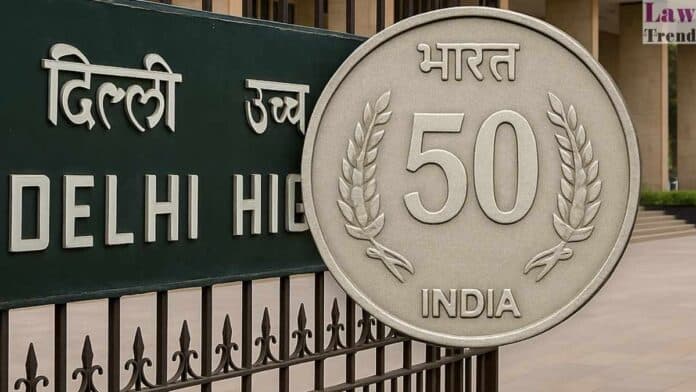The Central government has informed the Delhi High Court that there is currently no proposal to introduce a ₹50 coin into circulation, citing public preference for banknotes over coins, particularly in the ₹10 and ₹20 denominations.
In an affidavit filed by the Department of Economic Affairs, Union Ministry of Finance, in response to a public interest litigation seeking directions for issuance of ₹50 coins, the government said that a 2022 survey conducted by the Reserve Bank of India (RBI) had revealed a clear preference for banknotes. The survey found that the public found coins to be less convenient, primarily due to their weight and the similarity in size among various denominations.
“With regard to the feasibility of introducing a ₹50 coin, it is submitted that the Reserve Bank of India (RBI) conducted a survey in 2022 to analyze the usage patterns of existing coins and banknotes in circulation. The findings revealed a preference for banknotes over coins for the ₹10 and ₹20 denominations,” the Centre stated.
The government emphasized that the introduction of any new coin denomination depends on various factors, including public readiness, the extent of use in daily transactions, and concerns of specific communities such as the visually impaired.
“As indicated by the Reserve Bank of India’s survey, the public currently shows a preference for banknotes over coins in the ₹10 and ₹20 denominations. Therefore, any decision to introduce a ₹50 coin would depend on several factors including requirement of the economy, degree of public acceptance, etc., in addition to the concerns of the visually impaired persons. At present, no proposal regarding introduction of a ₹50 coin is under consideration by the Department,” the government clarified.
The petitioners had raised concerns about the ₹50 note being inaccessible to visually impaired persons. They argued that while other denominations, including ₹1, ₹2, ₹5, ₹10, ₹20, ₹100, ₹200, ₹500, and ₹2,000, had accessibility features such as intaglio (raised) printing or tactile markings, the ₹50 note lacked these, leaving no effective alternative in circulation for visually impaired users.
Responding to this concern, the government stated that the ₹10, ₹20, and ₹50 notes in the Mahatma Gandhi (New) Series do not have intaglio printing. The decision to exclude such features was based on practicality and cost efficiency. The RBI observed that tactile features on lower denomination notes erode quickly due to frequent handling, making them ineffective over time. Reintroducing such features would lead to increased production costs and reduced efficiency, the reply added.
However, to assist visually impaired persons, the RBI launched the MANI (Mobile Aided Note Identifier) application in 2020. The app allows users to identify denominations of banknotes through their smartphones using audio assistance, offering an alternative solution for accessibility.
The matter remains under consideration by the Delhi High Court.




